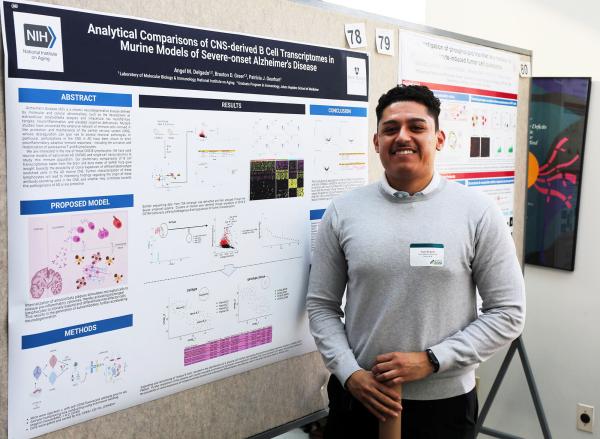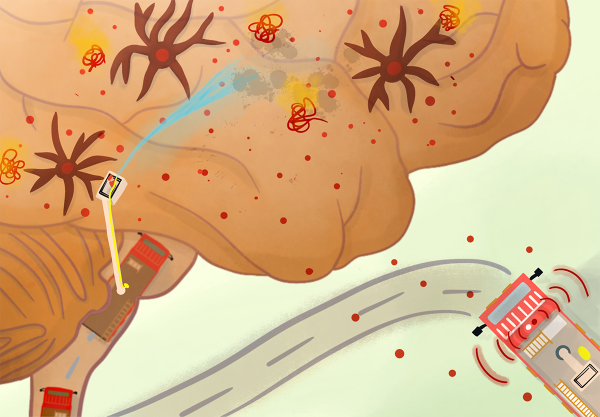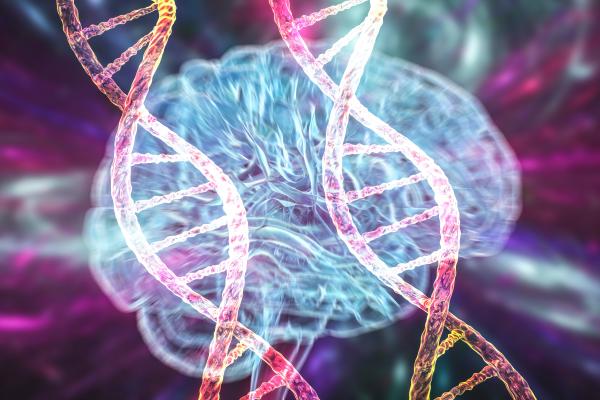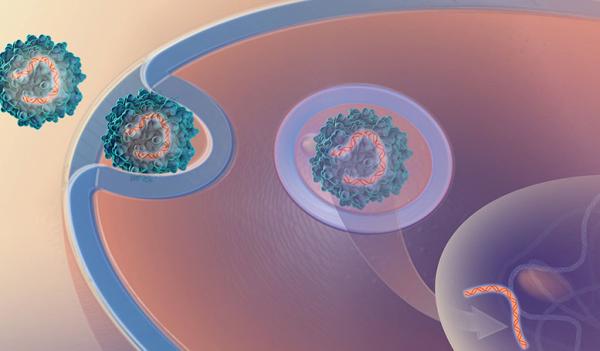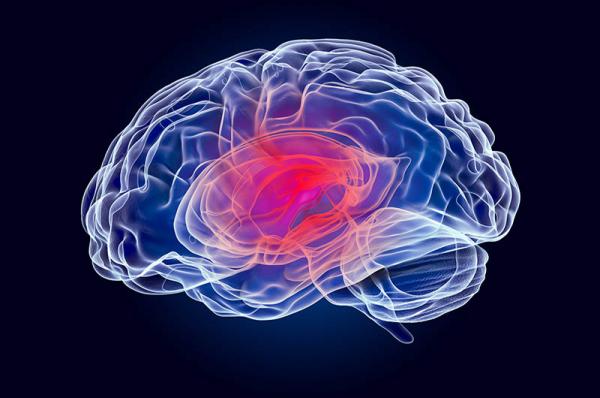Get a Glimpse of NIH’s Graduate Student Science
Aspiring Scientists Show off Research Findings at Annual Event
The NIH IRP provides not only a world-class environment for skilled scientists to make groundbreaking discoveries, but also an exhilarating training ground for the next generation of researchers. Among the many budding scientists working on NIH’s campuses are graduate students conducting part of their dissertation research in IRP labs.
Of course, these ambitious trainees aren’t waiting until they receive their degrees to contribute to scientific breakthroughs. At this year’s Graduate Student Research Symposium, more than 100 of them presented research on topics ranging from the skin condition psoriasis to the role of immune cells in Alzheimer’s disease. Read on to learn more about some of the ways current IRP graduate students have expanded our understanding of the human body.

